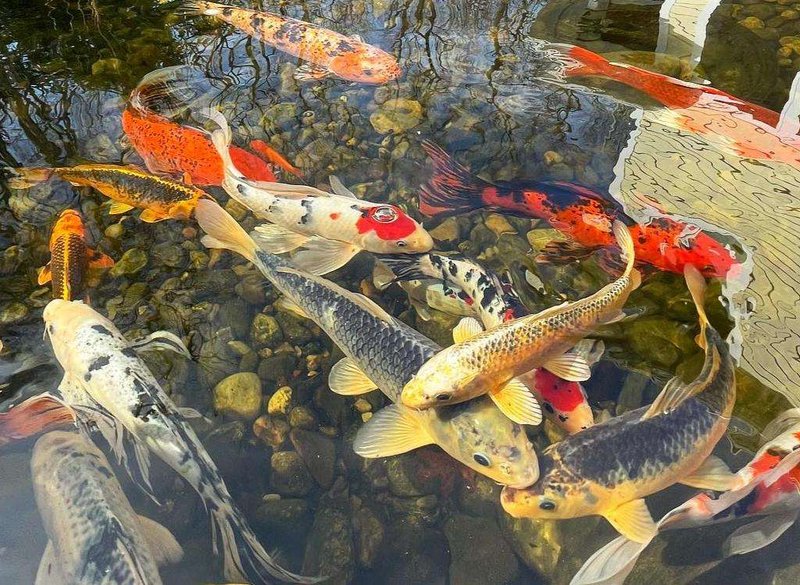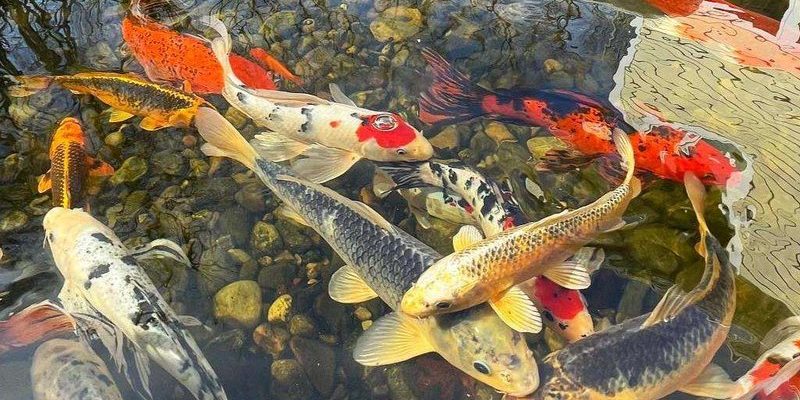
Winterizing a koi pond involves a series of steps that ensure your fish stay healthy and the pond remains functional despite the frost. It’s not just about keeping your koi alive, though—that’s certainly part of it. Winterizing is also about ensuring that your pond returns to its full glory when the warmer temperatures return. You might be wondering, “How do I even start?” Don’t worry! We’ll walk through each step together.
Understanding Your Koi Pond’s Needs
Before diving headfirst into winterization, it’s crucial to understand what your koi need during the colder months. Koi are cold-blooded fish, which means their body temperature matches that of the water around them. As temperatures drop, their metabolism slows down. They become less active and require less food. This change is natural, and your koi are equipped to handle it—but only if you prepare your pond properly.
Water temperature is a key factor in keeping your koi healthy. Ideally, koi thrive in water temperatures between 65°F and 75°F. When temperatures fall below 50°F, koi enter a state of dormancy. You might notice them hanging out at the bottom of the pond, just chilling—literally. They won’t need feeding at this point, as their digestive systems will slow down significantly.
Let’s also talk about oxygen levels. As the pond cools, oxygen levels can decrease, especially if ice forms on the surface. That’s where proper winterizing steps come into play, helping maintain a healthy environment for your fish.
Cleaning Your Koi Pond Before Winter
Cleaning your pond is an essential step in winterizing. Think of it as giving your koi a fresh start. You want to remove any debris, leaves, and algae that can decompose and create harmful gases while the pond is dormant.
First, grab a skimmer net or a long-handled net to scoop out any fallen leaves or debris from the surface. Don’t forget the bottom of the pond; use a pond vacuum if your pond has one. This will help prevent any buildup of waste that can harm the water quality.
Next, consider cleaning your filter system. Over time, your filter will collect debris, so clean it thoroughly. If it’s clogged, it won’t function well through the winter. Depending on your setup, you may need to replace certain filter media or components, so check the manufacturer’s recommendations for your specific filter model.
Consider Using a Deicer or Aerator
Keeping your pond’s surface clear of ice is crucial for maintaining oxygen levels. That’s where a deicer or an aerator comes into play. A deicer creates an area of open water, allowing harmful gases to escape and fresh oxygen to enter, benefiting the fish below.
When choosing a deicer, consider options made specifically for ponds. They are typically energy efficient and designed to work in cold water. Place it in the deepest part of your pond for the best results.
If you opt for an aerator, it serves a dual purpose: it helps to keep a portion of the pond ice-free while also increasing oxygen levels throughout the water. Just remember that both devices use electricity, so look for energy-efficient options to keep your energy bills in check.
Adjusting Your Koi’s Diet
As the weather cools, it’s a good time to adjust your koi’s diet. You might be wondering why this is important. Well, feeding them the right food at the right time can help them prepare for winter.
Start switching to a winter koi food that is easily digestible and lower in protein. This type of food helps maintain their health without overloading their systems, which are slowing down with the cold. It’s like trading in a hefty meal for a light snack when you’re not feeling quite up to it.
Gradually reduce the feeding amounts. Once temperatures drop below 50°F, you can stop feeding altogether. They’ll thank you by not getting sick in the cold water!
Protecting Your Koi from Predators
While winter may deter some predators, it doesn’t eliminate the risk. It’s important to think about how to protect your koi from threats like raccoons or birds that might still be around. Imagine your pond as a cozy home that needs a door to keep out unwanted guests.
Consider adding netting over your pond during winter months. This can deter birds from swooping down for a snack. If a net isn’t practical, think about planting some near the edges of your pond to create a natural barrier.
If you have a larger pond, you might even consider some kind of motion-activated lights or sounds to scare off predators. Keeping your koi safe means they can spend winter peacefully until the warm weather breaks.
Monitoring Water Quality Throughout the Winter
Even during winter, keeping an eye on the water quality is essential. You can’t just set it and forget it! Regular monitoring will ensure that your fish have a healthy environment to ride out the cold months.
Check the pH levels regularly, aiming for a range of 7.0–8.5. You can find affordable test kits at garden centers or online. If the levels dip too low or rise too high, it can stress your koi and potentially lead to health issues.
Also, keep an eye on other factors, like ammonia and nitrite levels. Although these levels should generally be lower during winter, checking won’t hurt. Maintaining good water quality means you’ll minimize problems when spring arrives, and your koi start to become more active again.
Preparing for Spring: What Comes Next?
Once the frost starts to thaw, you can begin looking ahead to spring. You’ll want to transition your koi and pond back into warmer conditions slowly. This includes reintroducing feeding schedules and ensuring your pond is cleared of any debris that might have accumulated.
Check your filtration system again to ensure it’s in good working order. You may find you need to do a little more cleaning or even replace some parts that wore out during winter.
Finally, think about any plants in or around your pond. As they start to wake up, you’ll want to prune or trim them to encourage new growth. Your pond will flourish beautifully as the weather warms, bringing both you and your koi joy.
In conclusion, winterizing your koi pond is all about preparation and care. By following these best practices, you’re setting your koi up for a healthy winter and a vibrant spring. It might seem like a lot of work, but think of it as a loving gesture toward your aquatic friends. They’ll reward you with a lively display when the weather warms up again!

